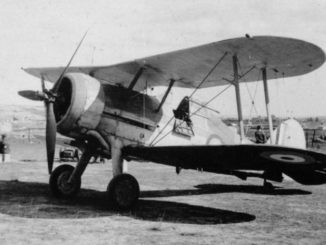
Previously unpublished photo courtesy of DJM’s uncle David, © 2021
The last month of the year 80 years ago. Still living in infamy the Americans finally got off the pot having spent much of 1941 making preparations for war.
The action this month is in Libya and the Mediterranean. On the 1st the 15th Panzer Division all but wiped out the 20th Battalion of the NZ 2nd Division at Belhamed but the attack was driven off by tanks of the 4th Armoured Brigade. On the same day Malta based reconnaissance aircraft found an Italian convoy heading for North Africa. 60 miles off Libya Allied aircraft sank the tanker Iridio Mantovani carrying 10,000 tons of fuel and two British cruisers were attacked by Italian destroyer Alvise Da Mosta but the cruisers fought back and sank the destroyer.
On the 3rd Axis forces tried to get through to Bardia, Sollum and Halfaya Pass but the Allied positions held firm. Italian submarine Scirè left La Spezia again with 3 manned torpedos, this time bound for Alexandria. On the 4th the 4th Armoured Brigade moved east to counter the Axis advance towards Bardia and Sollum. Rommel’s response was to pull back his units to make a concentrated attack on Tobruk. On the 5th the 4th Armoured Brigade remained on the Libya/Egypt border, they had seen Rommel withdrawing but were unsure what he was up to. Later that day German tanks attacked the Indian 11th Brigade near Tobruk but later still, Rommel was advised the supply situation would soon take a turn for the worse and he considered withdrawing to the Gazala line, about 40 miles west of Tobruk. Also on the 5th Australian pilot Clive Caldwell shot down 5 Stuka dive bombers over Libya but Hans-Joachim Marseille shot down his 26th kill, a Hurricane, while escorting Stukas near Bir el Gubi.
On the 6th submarine HMS Perseus struck an Italian mine while on the surface recharging her batteries 2 miles off Kefalonia in Greece, she sank killing 60 men. Hans-Joachim Marseille shot down two more planes to take himself to 28 kills. On the 7th Rommel ordered his forces back towards Gazala, he was abandoning the siege of Tobruk. On the 10th the siege was lifted. On the 11th the Italians took their positions at Gazala running south, Rommel’s forces, with only 40 tanks left, took position further south. British destroyer HMS Farndale forced an Italian submarine to surface 30 miles northeast of Bardia and used her guns to sink her. On the 12th Italian cruisers Alberto da Giussano and Alberico da Barbiano left Palermo with 135 men and nearly 2,000 tons of fuel. On the 13th these two cruisers ran into three British and one Dutch destroyer, both Italian ships were sunk and with them the fuel Rommel so desperately needed. Italian Battleship Vittorio Veneto left Naples and NZ and Indian troops attacked the Germans at the Gazala line. On the 4th submarine HMS Urge torpedoed the Vittorio Veneto in the Strait of Messina causing heavy damage. Further east an Italian submarine attacked cruiser HMS Galatea which was on its way to Alexandria, the attack failed but just before midnight U-557 attacked again and sank her killing 470 with 154 survivors.
On the 15th Rommel ordered the Cyrenaica region of Libya (the eastern half) to be abandoned and began to withdraw back to Al Agheila sharpish. On the 26th the 4th Armoured Brigade tried but failed to outflank the retreating Germans and the Italians mounted a fresh convoy of four freighters escorted by four battleships, five cruisers, twenty destroyers and one torpedo boat. Five German motor torpedo boats dropped seventy mines in Valletta harbour during the night. On the 17th 3 Squadron RAAF took delivery of its first Kittyhawk fighters and Allied and Italian navies started the First Battle of Sirte as it became known when their convoys crossed paths and swords. Italian battleships fired from a range of 32km, too far to be accurate but two Allied destroyers were damaged by near misses.
On the 18th the 4th Armoured Brigade reached Mechili but it was too far behind the retreating Germans to do any damage to Rommel. On the 19th the Indian 4th Division captured Derna in Libya but 30 Axis tanks arrived in Benghazi. Cruisers HMS Neptune, Kandahar, Aurora and Penelope plus destroyers HMS Lance, Lively and Havock sailed into a minefield near Tripoli. Aurora, Penelope and Kandahar were damaged but Neptune sank after hitting four mines. On the same day Italian frogmen on their manned torpedos got into Alexandria harbour sneaking in behind 3 destroyers for whom the nets had been opened and sank WW1 vintage battleships Queen Elizabeth and Valiant with limpet mines. The 6 Italians were captured but the ships were out of commission for a while leaving the British without a capital ship in the eastern Mediterranean while the Italians had five battleships in the Med.
On the 20th the badly damaged HMS Kandahar was scuttled off Libya. On the 21st the Germans and Italians increased their air attacks on Malta. On the 22nd Allied troops reached Beda Fomm while chasing the retreating Germans. The Axis began evacuating its forces from Benghazi and further out at sea, German ship Spezia and Italian ship Umbra Cadamosto ran into an Italian minefield off Misrata and sank. On the 23rd U-559 sank British passenger ship Shuntien off Tobruk killing 6 crew and 700 passengers who were mostly Axis PoWs. 64 crew members and 400 PoWs were rescued. Destroyers HMS Hasty and Hotspur sank U-79 off Sollum, all 44 crew survived.
Yet more submarine action this month, on the 24th U-568 sank corvette HMS Salvia near Mersa Matruh in Egypt, there were no survivors. On the 25th another blue on blue when Oberleutnant Ludwig Franzisket, flying over German positions in an attempt to boost morale, was wounded by his own side’s anti-aircraft fire. He went to Athens for medical treatment. On the 26th U-559 damaged Polish troopship Warszawa near Tobruk killing 23 men. The survivors were taken off by corvette HMS Peony. That evening U-559 finished Warszawa off with another torpedo.
On the 27th at the battle of El Hasela in Libya German tanks attacked the 22nd Armoured Brigade but failed to break through the defence. On the 28th U-75 attacked Allied convoy ME-8 near Mersa Matruh in Egypt sinking one ship, destroyer HMS Kipling retaliated and sank U-75 with depth charges. The next day 112 Squadron received its first Kittyhawk fighters, this was the Curtis P-40, also known as the Warhawk and Tomahawk depending on who was using it and which variation it was. 112 Squadron was the first Allied unit to use the shark mouth logo on the side of the engine/air scoop. The P-40 was used as a replacement for the Hurricanes which were suffering against the German 109s. Finally on the 30th British and German tanks met at El Haselet in Libya, the Germans lost 30 tanks whereas we lost 65. It is fortunate that Rommel had supply problems.
By the end of December the Luftwaffe had returned to Sicily with six hundred aircraft. There was much confidence in the Führer Bunker that the Russians had been beaten. The siege of Malta was about to begin its worst phase.
And in other news …. on the 2nd Churchill announced a new National Service Bill and this included compulsory service for women, on the 3rd Japan asked Italy to declare war on the US should a war begin between Japan and the US, on the 6th the UK declared war on Finland, Hungary and Romania, on the 7th (6th in Japan) came the attack on Pearl Harbour, on the 9th Japanese troops broke through a segment of the British Gin Drinker’s line next to Hong Kong, lovely name that, and on the 10th the Japanese took Gin Drinker’s line, this line was supposed to be like the Maginot line but it was only similar in that it didn’t stop the enemy, it was named after Gin Drinker’s Bay, on the following day British troops withdrew onto Hong Kong island, on the 11th Germany and Italy made one of their biggest mistakes ever and declared war on the US, it probably would have happened anyway but it would have been better to leave it as late as possible, that same day the US reciprocated the declaration, on the 12th Churchill placed Wavell in command of Burma’s defence promising him four fighter squadrons, six bomber squadrons and reinforcements of supplies along with the 18th Division and what remained of the Indian 17th Division after two of its Brigades had been sent to Singapore, the 3rd Squadron of the American Volunteer Group was also transferred to Rangoon, on the 13th that little shit Goebbels, brilliant PR man but personally a shit of the first water, wrote in his diary “The World War is here, the extermination of the Jews must be the necessary consequence”, in spite of all that had been said and done this may have been one of the earliest references to something almost no German would admit to, on the 26th 223 British commandos and 77 Norwegian troops landed on Moskenesøya in the Lofoten Islands in Operation Anklet helped by 22 ships of various nations, This was the second raid on the Lofoten islands, average high temperature in December of -0.5°, some of the ships raided other islands, amongst other things they captured an enigma machine and its code settings and on the last day of the year, Admiral Chester Nimitz took command of the US Pacific Fleet, the ceremony being performed in Hawaii.
So 1941 comes to an end with the Allies in North Africa on the offfensive and the Germans trying to make a fist of a bad position. There is still more than a year left to run but the entry of the US into the war, Churchill’s biggest desire, was complete and even though the Führer refused to believe that the US could produce as much as Germany was producing the writing was on the wall. The bastard Nazis (real ones, not that tosser Owen Jones’ Nazis) could only go downhill from now on. Not that finishing them off would be easy but they would be beaten militarily even if they did rise again with their shyte EU. I almost feel like having a rant about them but that can wait until they are out of North Africa for good.
The few of you who actually read these articles may notice the same place names in Libya coming up again and again. During the first year and more of the campaign they were just fighting over the same few pieces of real estate in the eastern half of Libya and just over the border in Egypt. Though there were lulls in the fighting in the desert, the same cannot be said of the war in the Mediterranean, it was non-stop for the Royal Navy who probably deserve more recognition than they get, this applies equally to the Merchant Navy.
© well_chuffed 2021



